FOR FUNDERS
Funding Black Disabled Liberation
In the United States, the abandonment of Black and disabled communities is historical tradition. The philanthropic sector has largely exacerbated this reality, upholding ableism and anti-Black racism through funding practices that deem grassroots Black-, and disabled-led organizations risky investments.
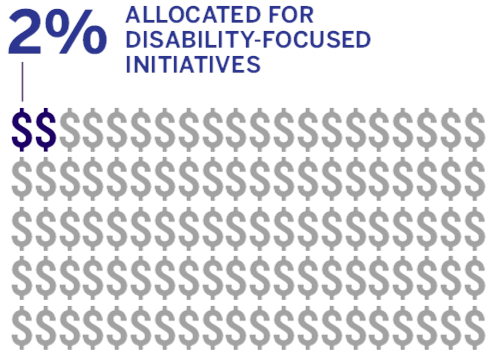
Only 2% of total philanthropic giving is allocated for disability-focused initiatives.
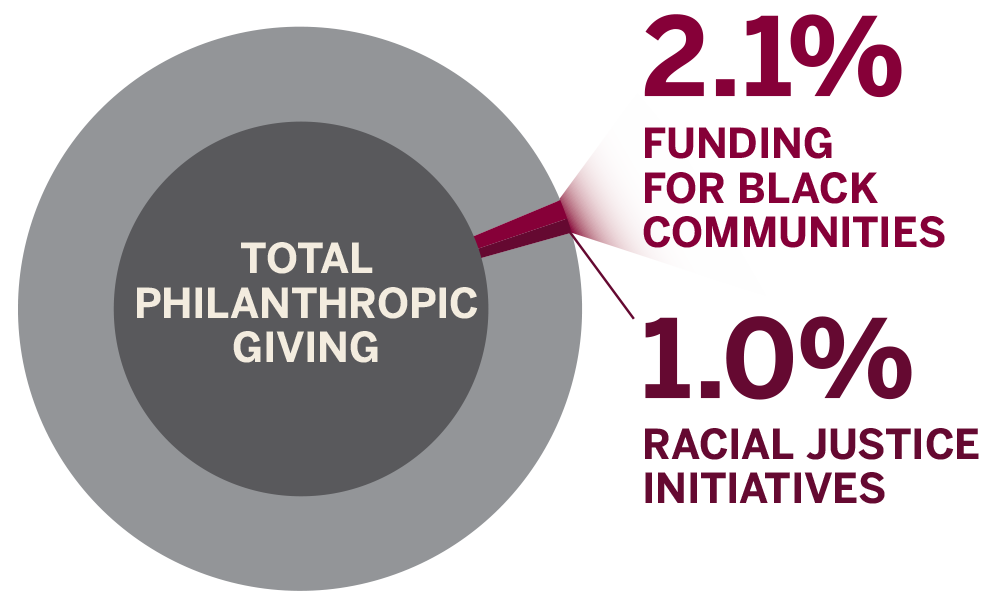
Despite an uptick in resource mobilization in response to the racial justice uprisings of 2020, funding for Black communities still represents only 2.1% of philanthropic giving overall, with just 1% of all funding going towards racial justice initiatives.
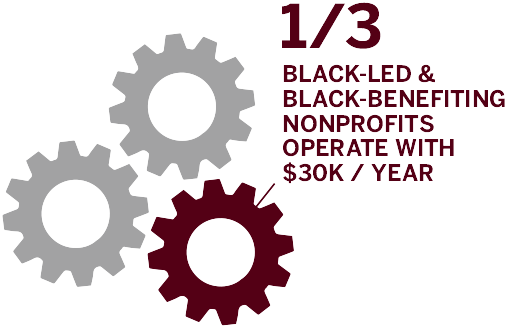
A majority of Black-led and Black-benefiting nonprofits operate on less than $500,000 a year, with nearly one-third operating with just $30,000 a year.
Institutional philanthropy’s approach to disability, too, has long been based on charitable giving approaches rooted in White supremacist, anti-Black, ableist and patriarchal ideologies. This has resulted in the prioritization of funding for large, White, and able-led direct service models. According to recent data, 94% of all disability-focused dollars are allocated towards “Disability Services and Supports,” while only 6% funds the work of “Disability Justice,” or radical, liberatory, systems-change efforts. This weaving of bias and erasure has resulted in a dearth of funding for Black and disabled communities, and particularly for folks living and organizing at the intersection of both identities.
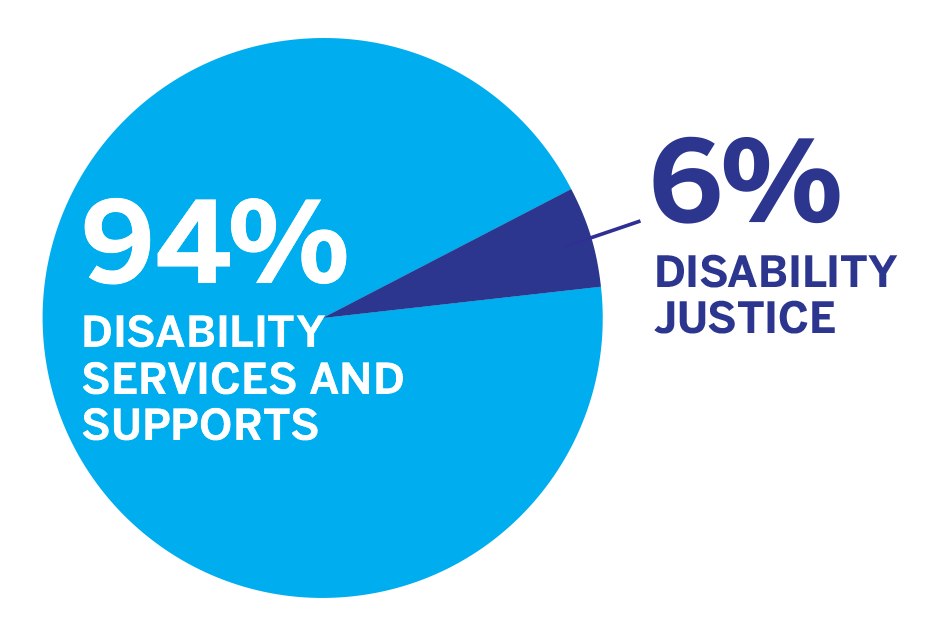
Over the last five years, pockets of philanthropy have slowly awakened to the principles of disability justice, including intersectionality, cross-movement solidarity, and collective liberation. However, foundations remain in the early stages of infusing these principles into their operations and decision-making.
In the meantime, this funder knowledge gap continues to yield fewer and inequitable access to resources for Black- and disabled-led organizations.
The Black Disabled Liberation Project is our offering at this critical intersection. It is our attempt both to resource the work of Black disabled organizers and, importantly, to make clear how funders can better center their leadership, wisdom, and solutions moving forward.
Ultimately, this project was conceptualized based on two questions we asked ourselves: first, how can funders show up for Black disabled liberation? And later, how can our process be a model for ways of resourcing Black liberation? Our grantmaking is our answer to the first question; and this site, which invites funders into a continued learning space with us, is our answer to the second.
Our Process
In 2023, Borealis Philanthropy’s Black Led Movement Fund (BLMF) and the Disability Inclusion Fund (DIF) came together to launch the Black Disabled Liberation Project. What follows is a high-level overview of our process, with a focus on the five elements of our work that we have identified as the most critical: undergoing political education; establishing a strategic, trust-based, and movement-led process; developing shared values and criteria; building in accessibility; and convening.
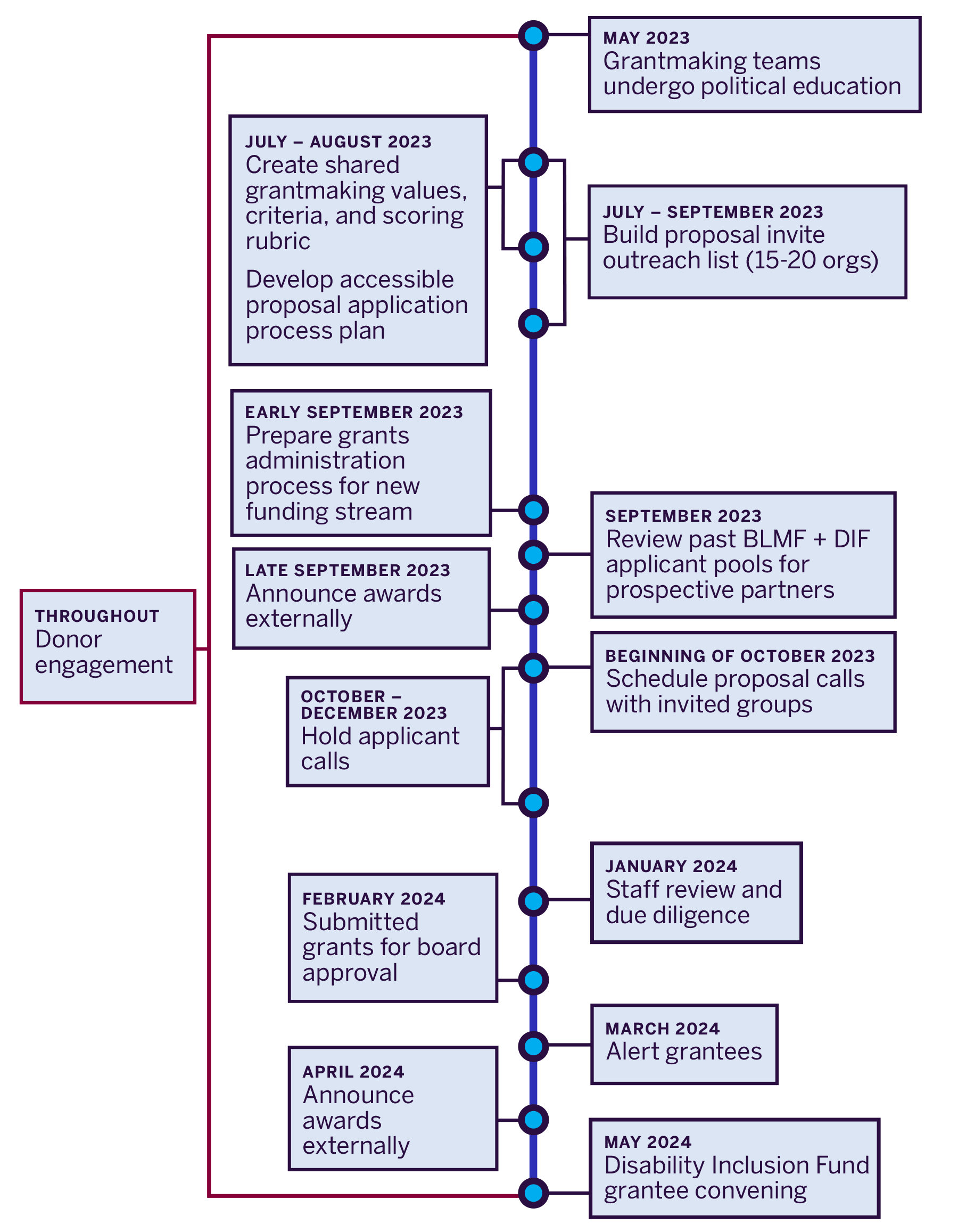
Undergoing Political Education
In a collaborative essay, racial equity practitioners Aja Couchois Duncan and Elissa Sloan Perry underscore the importance of political analysis and education:
“Collective sense-making requires some shared understanding of the current and historical structures, strategies, and belief systems that benefit some people at the expense of others […] whole-system conversations are crucial to restore the very real stories of settler colonialism, enslavement, genocide, wage theft, and extractive capitalism that have largely been disappeared from and or greatly distorted in our education systems.”
As a report co-authored by our comrades at Borealis’ Racial Equity to Accelerate Change Fund states, simply, “political education … is the foundation that opens up conversations about what is possible.” In beginning this co-funding process, our teams felt strongly that we must first arrive at a deep understanding of the historical inequities, practices, and systems that impact the lives of Black disabled folks—and the legacy of collective resistance to which they belong.
So we began, first, by deepening our political education. The BLMF, for example, completed an audit utilizing the Disability Justice Audit Tool envisioned by Stacey Park Milbern and Leah Lakshmi Piepzna-Samarasinha, and had an in-depth conversation with Leah to interrogate our existing grantmaking practices. The DIF team, on the other hand, familiarized themselves with the chronic underinvestment in Black-Led movement organizing, and why funders must be willing to leverage their political power to advance the movement for racial equity.
Our teams then underwent collective political education, stewarded by Black disabled disability justice movement leaders Yomi Wrong and India Harville, to whom we are deeply grateful. Over several gatherings, we discussed:
- The stories of activism and agitation—the histories of political struggle central to the movements for Disability Justice and Black Liberation.
- The ways in which these movements have drawn inspiration from one another, at times worked in cohesion towards shared goals, and also excluded the goals of the other throughout history and time.
- The disposability of bodies inherent in anti-Blackness, ableism, and capitalism.
- As well as the resistance inherent in Black disabled existence.
Developing Shared Values and Criteria
Critical to identifying grantee partners for our inaugural cohort was for our teams to first align under shared values steeped in disability justice principles, Black radical tradition, and our power and purpose as a philanthropic intermediary. Following deep and tender dialogue, we arrived at the following seven values:
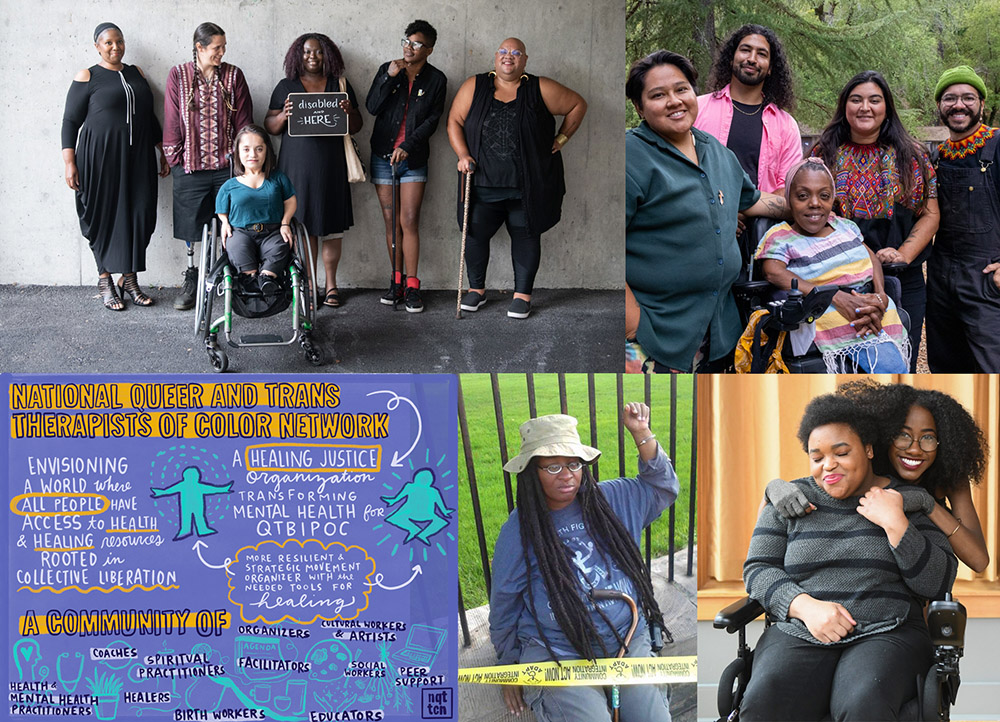
To determine alignment, we structured our invitation criteria and interview questions around these values. For example, we only invited folks existing and organizing at the intersection of Blackness and Disability into our process, and heeded the guidance of Yomi and India to connect with partners previously not on either of our Funds’ radar. And in our interviews, we asked prospective partners to reflect on their alignment with these criteria—to gauge a commitment to intersectionality, for example, we asked: How does your work intersect with the disability justice and inclusion movement and Black liberation movements? (For example, who is in senior leadership and makes decisions, who are you accountable to, and how do those who are most marginalized and impacted guide your work?)
Establishing a Strategic, Trust-Based, and Movement-Led Process
As Funds belonging to a grassroots-serving intermediary whose team members are deeply embedded in—and representative of—the communities we serve, and thus began the process of identifying prospective grantee partners by lifting Black disabled organizations in our existing orbit. Next—in keeping with our trust-based Black disabled-led process—we turned to our consultants, Yomi and India, to provide guidance on elders, organizers, and groups leading in this area but not yet on our Funds’ combined radar.
After undergoing political education, identifying prospective groups, and conducting video interviews with each prospective partner, we approached the selection of our inaugural cohort through a strategic and inclusive lens. Utilizing our developed value and criteria rubric, we identified aligned work, and then sought to put together a group with overlapping issue area priorities; cross-movement representation; and representing parts of the country where disability justice infrastructure is in need of investment.
Building in Accessibility
In designing this process, our teams made every effort to incorporate accessibility upfront–and throughout the process—instead of considering it as an afterthought or amendment. In our inaugural year, we implemented the following practices to ensure accessibility:
- In lieu of written application materials, all prospective applicants were invited to Zoom calls to share more about their work.
- When folks signed up for their interviews, we asked, up front, about their access needs, and made accommodations to support these needs (i.e. extra time on calls, live captioning, ASL interpretation).
- Those invited to calls received all interview questions in advance, to extend time to consider and prepare, and the opportunity to enter into the conversation with greater ease.
- We began each call by checking in around accessibility needs, and to first connect, person to person, in an attempt to make folks feel held, honored, and appreciated, and thus comfortable enough to show up as their best selves.
- To offer space for interviewees to discuss their work and accomplishments in their own words and terms, we ended each call by asking: Is there anything else you want us to know about your work that we haven’t yet asked you about?
In addition to making our process more inclusive, these steps also resulted in a more relationship-centered process. Ultimately, they allowed us to observe the passion and how much each these organizations—and the folks who comprise them—have given of themselves in the pursuit of Black disabled liberation.
As we carry this work forward, we will continue to adjust and adapt our processes based on the valuable input of movement, which is constantly reimagining our collective ways of being and doing to secure greater inclusivity for all. If you have suggestions for how we can further infuse the principles of accessibility throughout this website or in future grantmaking processes—or celebratory accessibility stories to share—please connect with us.
Our Aim and Ask
It is abundantly clear that Black and disabled-led organizations and leaders are currently stretched thin to the point of literal collapse, with our communities’ livelihoods, the lives of organizers, and our collective liberation at stake. This is what philanthropy’s historical lack of investment at this intersection means, in very real and human terms. Here’s what a long overdue, vital course correction will require of philanthropy:
- Deep, long-term, and trusting investments that expand the capacity and creative visioning efforts of Black disabled organizers who are leading us with urgency, love, and steadfastness towards new worlds.
A new level of investment in the infrastructure to hold and steward collective solutions, wisdoms, and insights across movements. This means funds for grassroots organizers, and also entities like Borealis, which are able to move in more nimble ways to give and sustain life for this essential work. - Both acknowledgment and action around the importance of relationship-centeredness in our work. (In the case of the Black Disabled Liberation Project, for example, it is the relationship between our funders and us, as an intermediary + the relationship between our individual funds + the relationship between our funds and the movement ecosystem that birthed this work. And it is the trust built in each of these directions that made it possible.)
- Continued learning and evolution of our collective intersectional analysis and approach to the work of disability justice, Black liberation, and Black disabled liberation—and a commitment to operating in step with movement, and so that it may see ourselves reflected in our work.
It is our belief that the most effective work to challenge the status quo happens on a local, grassroots level, often outside of traditional 501(c)(3) structures. We encourage all funders to identify manifold and creative ways to support grassroots groups working on the frontlines without access to significant sources of support from major philanthropic partners. This includes collaborating with funds like ours, which can support in forging connections with—and funneling resources to—the frontlines of movements for justice, which, importantly, include Black disabled liberation.